Kathmandu’s Sacred Stupas: Swayambhunath and Boudhanath Pilgrimage
Among the most revered Buddhist stupas in Nepal, Swayambhunath Stupa and Boudhanath Stupa stand as timeless testaments to Kathmandu’s living spirituality. Known respectively as the Swayambhunath Monkey Temple and the Boudha Stupa Kathmandu, these two sacred sites embody centuries of faith, art, and devotion. From the hilltop Swayambhunath viewpoint Kathmandu offering panoramic sunrise views to the peaceful Boudhanath World Heritage Site surrounded by fluttering prayer flags and chanting monks, both stupas invite travelers into the spiritual heart of the Himalayas.
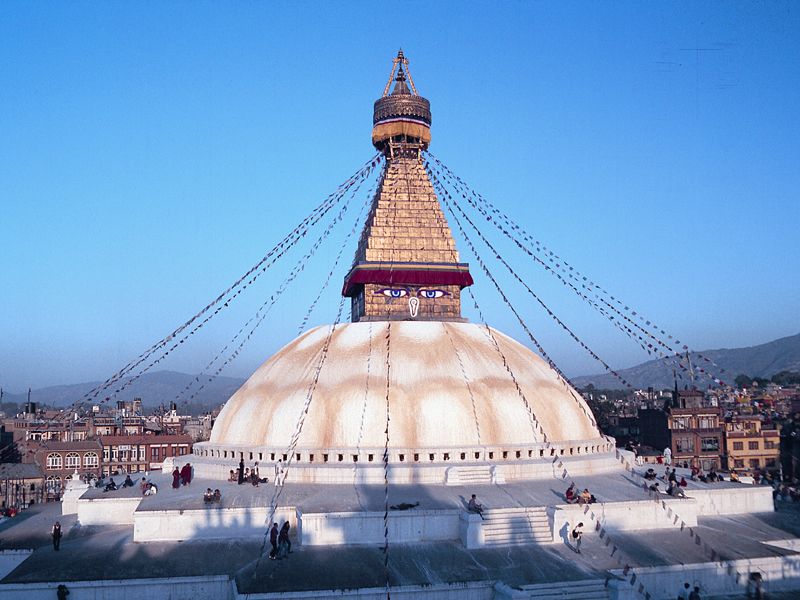
Swayambhunath Stupa – The Self-Existent Shrine
The Swayambhunath Stupa, one of the oldest Kathmandu stupas, is believed to have emerged spontaneously — hence the name “Swayambhu,” meaning self-created. Its history stretches back over 2,000 years, symbolizing the awakening of consciousness. Crowned by Buddha’s all-seeing eyes, the Swayambhunath temple Nepal offers spiritual tours and heritage walks for those seeking deeper insight into the cultural heritage of Kathmandu. Climbing its 365 steps, visitors pass prayer wheels and shrines before reaching the Swayambhunath viewpoint Kathmandu, a favorite spot for photography and peaceful reflection.
The History of Swayambhunath Stupa
According to legend, the history of Swayambhunath Stupa begins when the Kathmandu Valley was a vast lake. A lotus blossomed here, and from its light, the hill of Swayambhu arose — a divine site where wisdom manifested itself. Over centuries, kings and devotees expanded the complex, adding temples, chaityas, and statues. Today, Swayambhunath UNESCO site remains a symbol of harmony between Hindu and Buddhist traditions, attracting monks, pilgrims, and curious travelers alike. The site’s monkeys, prayer flags, and butter lamps together create a magical ambiance unique to spiritual tourism in Nepal.
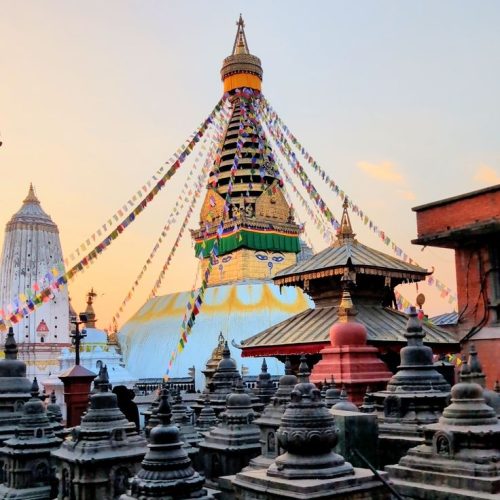
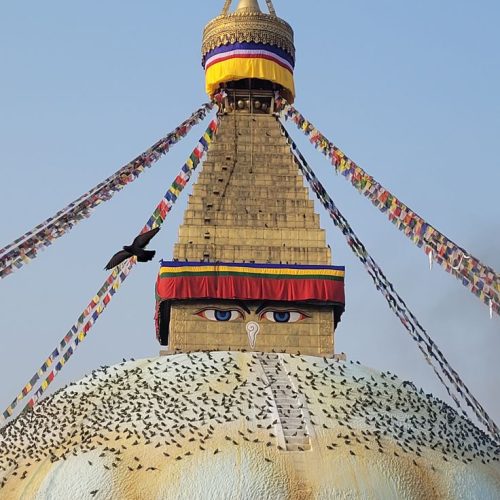
Boudhanath Stupa – The Center of Tibetan Buddhism
A few kilometers from Swayambhu lies the majestic Boudhanath Stupa, the largest in Nepal and one of the holiest Buddhist pilgrimage sites in the world. The meaning of Boudhanath Stupa lies in enlightenment itself — its mandala design represents the path to awakening. As the heart of Tibetan Buddhism in Nepal, the Boudha Stupa Kathmandu is encircled by monasteries, nunneries, and meditation centers. Visitors can join morning circumambulations with locals, lighting butter lamps and spinning prayer wheels, a timeless expression of devotion that fills the air with serenity.
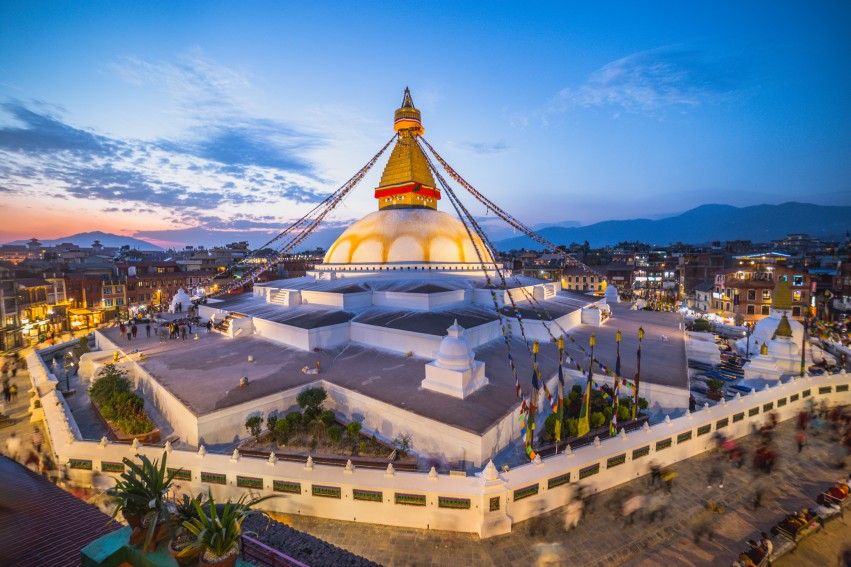
Things to Do Near Boudhanath
Around the Boudhanath World Heritage Site, travelers can explore vibrant Tibetan monasteries around Boudha, savor authentic Nepali and Tibetan food in rooftop cafés, or join meditation at Boudhanath Stupa led by monks. Don’t miss the heritage walk Kathmandu stupas connecting Boudha to other sacred sites in Kathmandu Valley like Pashupatinath and Kopan Monastery. Early mornings and late evenings offer the most moving experiences, as hundreds of butter lamps illuminate the stupa in golden light — a photographer’s dream and a pilgrim’s peace.
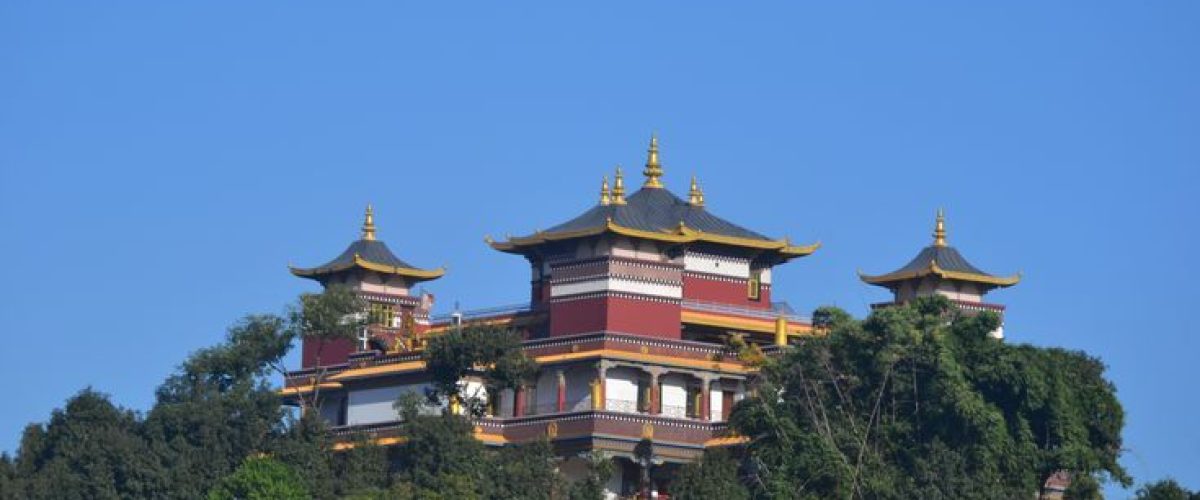
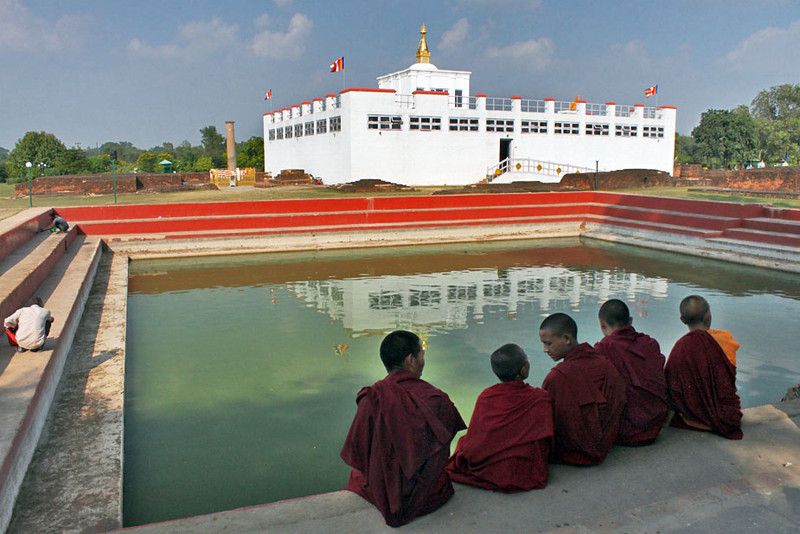
Buddhist Architecture & Symbolism
Both stupas are masterpieces of Buddhist architecture in Nepal, representing cosmic order and the spiritual journey. The dome symbolizes the earth, the eyes represent wisdom and compassion, and the spire points toward enlightenment. At Swayambhu, each tier signifies the elements — earth, water, fire, air, and ether — guiding the pilgrim toward spiritual ascent. At Boudha, the vast mandala form embodies the universe itself, radiating calm and unity. Together, they preserve the cultural heritage of Kathmandu as living monuments of Buddhist philosophy.
FAQs about Swayambhunath & Boudhanath Stupas
Lorem Ipsum is simply dummy text of the printing and typesetting industry, where an unknown printer took a galley.
1. What makes Swayambhunath Stupa special?
It’s one of the oldest Buddhist stupas in Nepal, offering panoramic views and deep spiritual energy.
2. What is the meaning of Boudhanath Stupa?
It represents enlightenment and the Buddha’s wisdom, symbolized through its geometric mandala design.
3. Are Swayambhunath and Boudhanath UNESCO World Heritage Sites?
Yes, both are part of the Boudhanath World Heritage Site listings within the Kathmandu Valley.
4. What are the best photography spots near Kathmandu stupas?
Sunrise at Swayambhunath viewpoint Kathmandu and dusk at Boudha Stupa Kathmandu are top spots.
5. Can visitors join Buddhist rituals at Boudhanath?
Yes, travelers can respectfully join circumambulations, light butter lamps, and spin prayer wheels.
6. What are the best things to do near Boudhanath?
Explore monasteries, enjoy local food, shop for handicrafts, and attend meditation at Boudhanath Stupa.
7. What is the best time to visit Boudha Stupa?
Early morning and evening are ideal for peaceful experiences and spiritual ambiance.
8. Are there Tibetan monasteries around Boudha?
Yes, numerous Tibetan monasteries around Boudha host monks, prayers, and retreats.
9. What’s the link between Swayambhunath and Boudhanath?
Both form the core of the Kathmandu Buddhist circuit, connecting Nepal’s most sacred spiritual landmarks.
10. How does local life around Boudhanath reflect Buddhism?
The community revolves around prayer, compassion, and cultural exchange, embodying spiritual tourism in Nepal.
Plan Your Swayambhunath & Boudhanath Tour with Namo Nepal
Explore the timeless spirituality of Swayambhunath and Boudhanath Stupas, the twin jewels of Kathmandu’s Buddhist heritage. Whether you seek meditation, culture, or photography, these sacred sites offer moments of deep peace and inspiration.
Plan your journey with Namo Nepal — your trusted guide to spiritual tourism in Nepal, connecting you to the sacred sites, local life, and ancient wisdom of the Himalayas.
